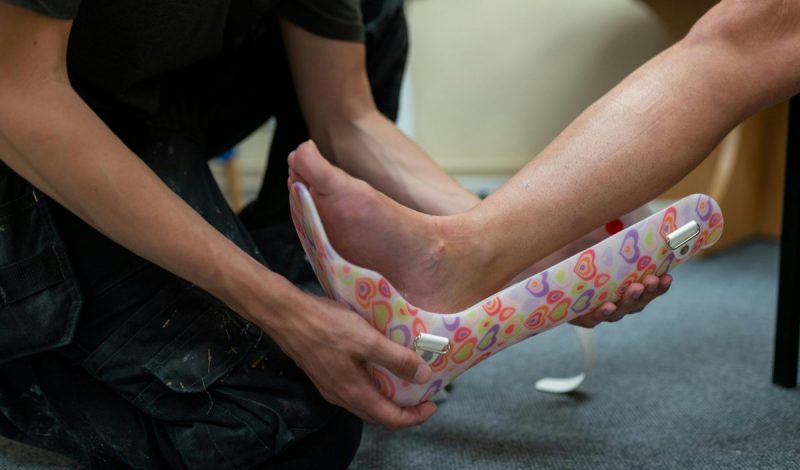Understanding Ankle Sprains: Causes, Symptoms, and Treatment
Ankle sprains are one of the most common musculoskeletal injuries, affecting individuals across various age groups and activity levels. We have seen countless cases of ankle sprains, ranging from mild to severe. At Skelian Chiropractic Clinic in Cheltenham, we are dedicated to providing comprehensive care for ankle sprains and helping our patients achieve a full recovery.
In this blog, we will explore the different types of ankle sprains, their mechanisms of injury, the anatomy involved, why swelling occurs, and the importance of swelling in the recovery process.
Types of Ankle Sprains
Lateral Ankle Sprain (Inversion Sprain)
Prevalence: The most common type of ankle sprain, accounting for approximately 85% of all ankle sprains.
Mechanism of Injury: Typically occurs when the foot rolls inward, causing the ankle to twist. This often happens during activities that involve sudden changes in direction or uneven surfaces.
Anatomy Involved: The lateral ligaments of the ankle, particularly the anterior talofibular ligament (ATFL), are the most commonly injured structures in this type of sprain.
Symptoms: Pain on the outer side of the ankle, swelling, bruising, and difficulty bearing weight on the affected foot.
Medial Ankle Sprain (Eversion Sprain)
Prevalence: Less common, accounting for about 5-10% of ankle sprains.
Mechanism of Injury: Occurs when the foot rolls outward, causing the ankle to twist. This can happen during activities that involve landing from a jump or a direct blow to the outer side of the ankle.
Anatomy Involved: The deltoid ligament on the inner side of the ankle is typically injured in this type of sprain.
Symptoms: Pain on the inner side of the ankle, swelling, bruising, and difficulty bearing weight.
High Ankle Sprain (Syndesmotic Sprain)
Prevalence: Least common, accounting for approximately 1-10% of ankle sprains.
Mechanism of Injury: Often occurs during high-impact activities such as football, skiing, or basketball. It involves a twisting injury to the ankle with the foot planted, causing the tibia and fibula to separate.
Anatomy Involved: The syndesmotic ligaments between the tibia and fibula are injured, which can lead to instability in the ankle joint.
Symptoms: Pain above the ankle, swelling, bruising, and a feeling of instability.
Why the Ankle Swells
Swelling is a common response to ankle sprains and serves several important functions in the healing process:
Increased Blood Flow: When an ankle sprain occurs, the body increases blood flow to the injured area. This blood carries essential nutrients and oxygen that are necessary for tissue repair.
Inflammation: The body’s inflammatory response is triggered by the injury, leading to the release of chemicals that help repair damaged tissues. This process also attracts white blood cells to the area to fight off any potential infection.
Fluid Accumulation: Swelling is the result of fluid accumulation in the tissues surrounding the injured area. This fluid helps cushion and protect the damaged ligaments while they heal.
Pain and Immobility: Swelling and inflammation can cause pain and limit the range of motion in the ankle. This is the body’s way of preventing further injury by immobilizing the joint.
Importance of Swelling in Recovery
Swelling, though often uncomfortable, plays a crucial role in the healing process of ankle sprains:
Protection: The increased fluid and inflammation create a natural splint that helps stabilize the ankle and prevent further injury.
Healing: The inflammatory response and increased blood flow bring essential nutrients and cells to the injured area, promoting tissue repair and recovery.
Pain Management: While swelling can cause pain, it also serves as a signal to the body to rest and avoid putting weight on the injured ankle, allowing for proper healing.
Services at Skelian Chiropractic Clinic
At Skelian Chiropractic Clinic in Cheltenham, we offer a range of services to help patients recover from ankle sprains and prevent future injuries. Our experienced chiropractors and physios use evidence-based techniques to provide personalised care tailored to each patient’s needs.
Chiropractic Adjustments: Gentle adjustments to the ankle and surrounding joints can help restore proper alignment and reduce pain.
Soft Tissue Therapy: Techniques such as massage, myofascial release, and trigger point therapy can help reduce muscle tension and improve blood flow to the injured area.
Rehabilitation Exercises: Customized exercise programs are designed to strengthen the muscles around the ankle, improve flexibility, and enhance stability.
Kinesiology Taping: Taping techniques can provide additional support to the injured ankle, reduce swelling, and promote healing.
Education and Prevention: Our chiropractors provide education on proper footwear, stretching, and strengthening exercises to prevent future ankle injuries.
In conclusion, ankle sprains are a common injury that can vary in severity. Understanding the types of ankle sprains, the mechanisms of injury, the anatomy involved, and the role of swelling in recovery is essential for effective treatment.
At Skelian Chiropractic Clinic, we are dedicated to providing comprehensive care for ankle sprains and helping our patients achieve optimal health and function.
Learn more about our services and schedule an appointment with our experienced chiropractors and physios. Call 01242 254000 to speak to our reception team. Your path to recovery starts here!





